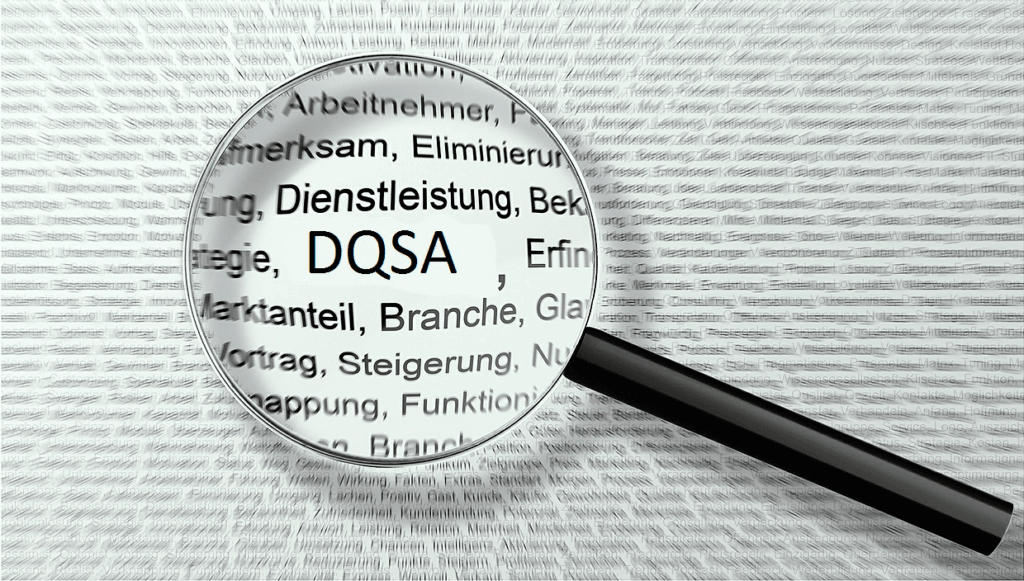Drug Quality and Security
The problem of counterfeit medicaments and drugs reproduction is one of the major drawback affecting health care systems, patients, and companies worldwide. It is a busting “market” with an estimated worth of 75 billion dollars a year (WHO, 2010). It is fueled by high drugs demand and ease of distribution.
Additionally, Internet became a main tool coordinating sales and supply chains of fake products. Due to fast development of genuine pharmaceuticals, distribution chains became a highly complex network, which gives an opportunity to counterfeit. Drug manufacturers face numerous challenges and issues in regards to supply chain security and integrity. Tremendous profit loss as well as unnecessary death of hundreds of patients worldwide forced the American Senate to begin working on the distribution-chain guarding bill. Leaders from the House committee controlling health policy introduced H.R. 3204, the Drug Quality and Security Act. The act is a bicameral regulation written to report high-risk medication compounding and to support traceability as a solution protecting pharmaceutical supply chain.
 The Drug Supply Chain Security Act (Title II, Drug Quality and Security Act, 2013) aims to form a national system that allows each party to trace and track every single package of product. The serialisation and traceability regulations will be exactly specified in over the next 10 years. FDA with various stakeholders tries to implement processes improving detection and elimination of possibly dangerous and/or fake drugs. They believe that by implementing product serialisation and traceability systems, they can reduce counterfeiting and drug illegal reproduction.
The Drug Supply Chain Security Act (Title II, Drug Quality and Security Act, 2013) aims to form a national system that allows each party to trace and track every single package of product. The serialisation and traceability regulations will be exactly specified in over the next 10 years. FDA with various stakeholders tries to implement processes improving detection and elimination of possibly dangerous and/or fake drugs. They believe that by implementing product serialisation and traceability systems, they can reduce counterfeiting and drug illegal reproduction.
Implication of The Drug Quality and Security Act (H.R. 3204)
The main implication of the Drug Quality and Security Act (H.R. 3204) is to create a detailed controlling system, which specifies responsibilities, drug production and distribution requirements. Furthermore, it defines guidelines for outsourcing facility (large-scale compounding pharmacies, regulated by the FDA), as well as for traditional compounding drugstores.
It states resale and reporting norms, drugs advertising practices and facilitates usage of tracing solutions for drug products through the pharmaceutical supply distribution chain. Moreover, the act requires the secretary to establish standards for drug manufacturers, wholesalers, dispensers, and re-packagers in regards to transaction documentation exchange procedures (including transaction information, transaction history, and transaction statements). It stresses an importance of lot-level information (vs. service number identification -SNI or unit), “e-pedigree” and “product tracing”, which records ownership status and transactions changes between trading partners. It requires to provide all operation data to the subsequent owner for every single operation, and capture and maintain it for six years, whether as a buyer or as a seller.
DQSA: Implementation and validation
The overall goal is to form, within 10 years, an interoperable, electronic tracing system of pharmaceutical products, including package level information, which will promptly respond to the occurrence of a recall, need of a suspect product investigation or an appearance of illegitimate product.
In fact, efficiency of the track-and-trace system remains to be seen. Technical performance of the system and its effectiveness are the main concerns.
The FDA gives a very short time to modify companies’ electronic systems after enacting the standards regarding trading partners exchange information. Regarding letter of bill, firms related to any drug supply chain activities should have started using those standards to structure and convert the pedigree information on January 1, 2015. Until then, the Prescription Drug and Marketing Act is continued in force, as it is considered a bridge to the new national framework. New federal legislation immediately averts state laws, regulations and requirements for tracking products through the distribution chain, containing any recordkeeping and pedigree requirements.
In fact, those regulations have not been enacted in time. Congress did not manage to authorize them before December 31, 2014. Thus businesses still have the formerly expected time to prepare. “To minimize possible disruptions in the distribution of prescription drugs in the United States, FDA does not intend to take action against trading partners who do not, prior to May 1, 2015, provide or capture the product tracing information.” Nevertheless, it is still a pretty tight deadline to redesign something as complex and critical to the company’s success. Unless those regulations are ludicrously simple (no one knows until publishing initial draft guidance), there is not enough time for firms to comply with them.
Serialisation and Authentication
In fact, serialisation commands a comprehensive system to track and trace the route of drugs through the complete supply chain. Theoretically, it could identify each product by an exclusive serial number supplemented to the source, shelf life and batch number for that article. It could possibly provide the product’s lifecycle history starting at production, through supply, ending at the patient. Nevertheless serialisation raises several challenges in today’s global drug market. It demands controlling highly complex structure in which product is moved across various parties as many as 10 times or more. Authentication of the drugs is difficult and is solely based on data sharing across distribution network.
In Europe, the “authentication” is based on item-level serialisation (product recorded in a national or regional database) and then validated at the point of release. Whether in American “pedigree system” goods are serialised, aggregated, and authenticated when a change of ownership/custody happens. Information is shared between trading associates along the supply chain. The effectiveness of both models seem to be equally successful, and regardless of option chosen, it is a system guaranteeing delivery of quality product in today’s global marketplace.
Risk associated with DQSA
Experts warn that even though Drug Supply Chain Security Act (DSCSA) was issued to ensure supply security, criminals will be able to abuse the drug distribution system. The drug supply chain to authorize the validity of drugs, and to detect illegal products relies mostly on the Product Identifier Authentication (PIA). It requires the use of SNI, and it is where counterfeiters have a chance to get “into the game”. It will be relatively easy for fake distributors to learn and apply valid SNIs on false products, cases, and packages.
As explained by Dirk Rodgers (Drug supply chain expert for RxTRace) if a drug producer allocates serial numbers to drug packages directed for American market, then counterfeiters will save valid serial numbers for plenty of packages. With a range of numbers, they can easily appoint serial numbers within the same series. Later, anyone who will verify product, using the PIA system will incorrectly defined it as a “valid” article. The only way to avoid it is to randomize the serial numbers making serialisation figures unpredictable.
Notwithstanding, for the real results of the Act’s effectiveness and test of value, all stakeholders will have to wait. “The test is whether or not the crimes that are being committed today will be blocked once the changes go into effect and whether or not patients are protected better than they are today” (Dirk Rodgers, 2013).
To achieve that, technology must be able to process the data at a real-time pace. If it collapses, all supply chain parties will experience delays in manufacture, disruption in supply, delivery and finally in consumption. The consequences go beyond profitability and cost – effectiveness. Such a disturbance may cause medicaments shortages and limiting the access to drugs that patients essentially need. It would affect and distract public health systems worldwide.
How does it affect the Pharmaceutical Manufacturer?
Introduction of track and trace systems can impact competitiveness of products and their pricing. In fact, DQSA allows traditional pharmacies to produce drugs on a smaller scale, therefore they have more liberty in what they can compound. They will have possibility to meet niche needs and gain new clients. On the other hand, many groups will not have instant access to a compounding pharmacy; therefore they might be often “out of state”. In fact new regulations, in some cases, will demand an individualized prescription in advance. It might cause indispositions or delays in obtaining the drugs patients need. Thus large outsourcing facilities might become too competitive for smaller local firms.
Conclusion
According to DQSA, stakeholders were required to have a supply-chain tracking system processes ready by January 1, 2015. Within two years of that date, the pharmaceutical industry has to start assigning serial numbers to commercial units of each prescribed product traded in this country. Some vendors are already stating that given timelines are unrealistic.
Drug corporations will implement demanded systems, but in reality, the overall supply chain strategy of serialisation lacks any regularity and consistency. Various business practices, arrangement and systems structures need more than just one solution. Therefore it will be interesting to see if any real achievement will be reached by such an aggressive actions and timelines. In fact with no well-defined instruction in place, drug manufacturers will apply or reconfigure solutions that apparently already exists and works. Lack of time will cause implementation of worthless systems, which will be insufficient and inflexible. If the idea of executing the Drug Supply Chain Security Act (Title II, Drug Quality and Security Act) does not change, the risks of counterfeiting, accompanied with pharmaceutical industry will make DSCSA meaningless and insignificant. It will result the drug supply chains to continue being in peril.
Serialisation and traceability aim to safeguard of the drug supply chain and ensure better integration and information control. Nevertheless to achieve it, firms must literally expand beyond national law regulations. They must apply right tools, thoughtful planning processes and adjustable technology. All those elements combined together can generate maximum benefits, ensuring patient safety and avoidance of drug imitations and shortages.
If you want to find out what has happened with the DQSA between 2013 and 2015 ask for full text article: contact@kvalito.ch
Author: KVALITO Consulting Group





